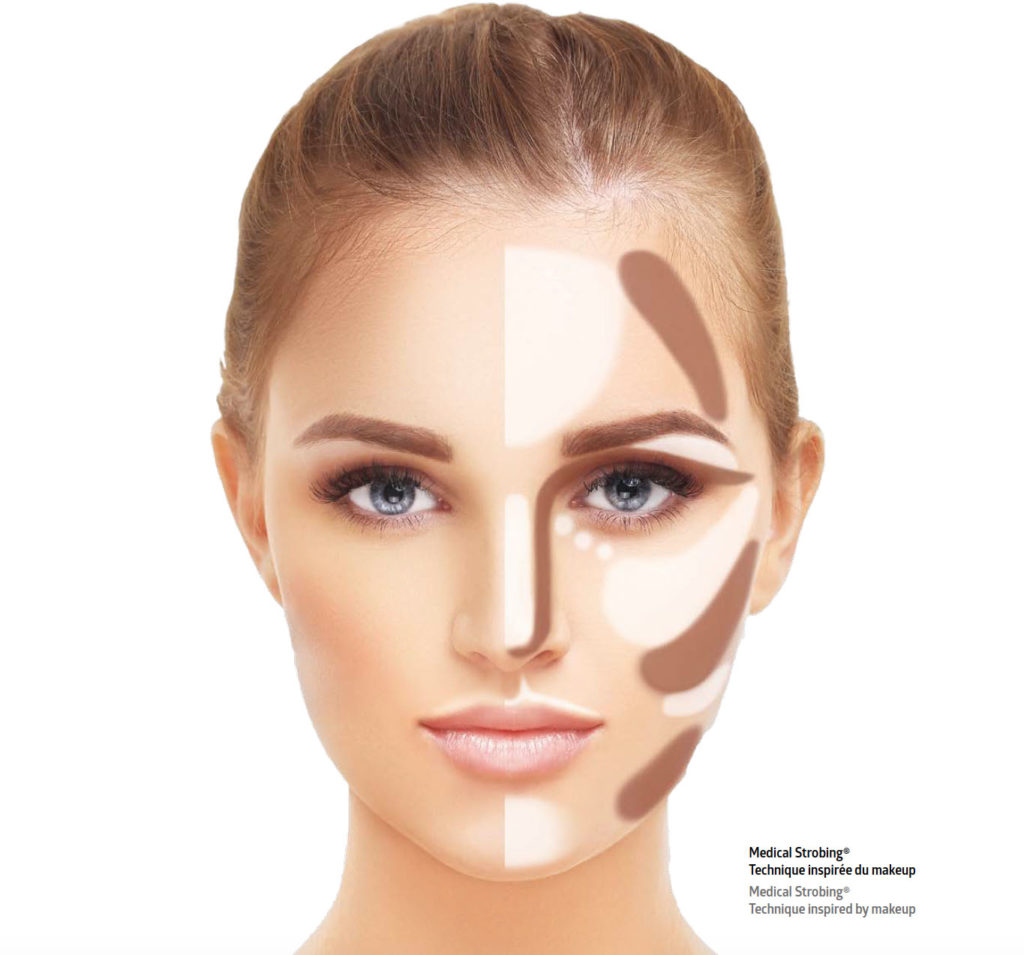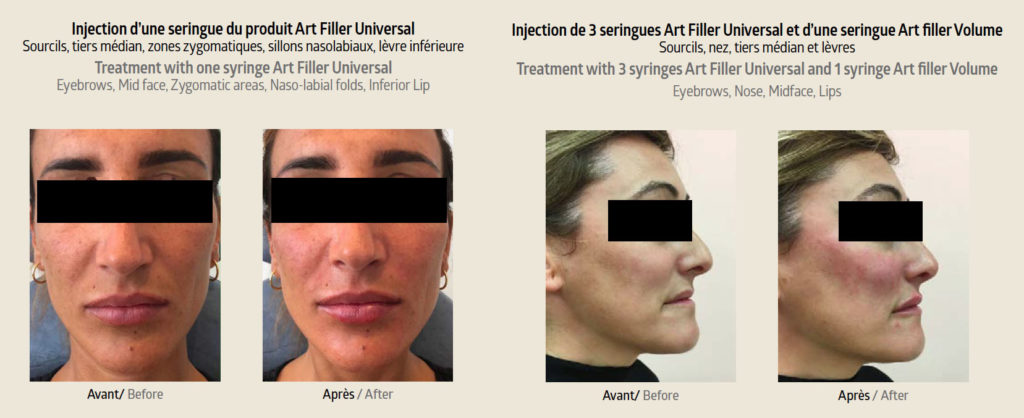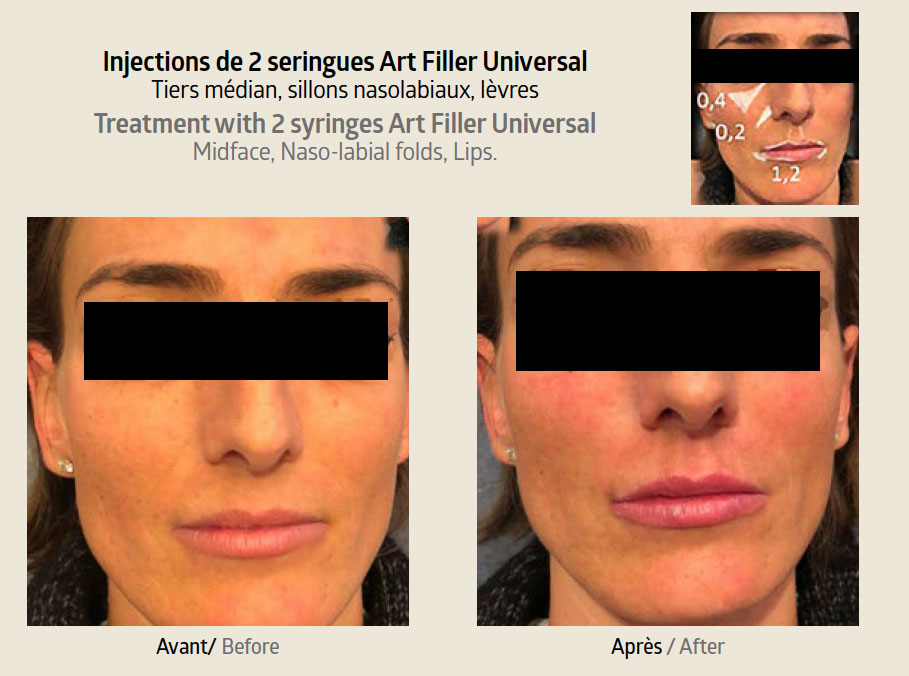By Dr Frédéric Braccini, MD
“Less is More” technique
The “Less is More” technique distinguishes between static and dynamic facial planes, allowing for natural expressions, positive patient image, an artistic analysis that encompasses the entire face including untreated facial units.
 Aesthetic medicine is a rapidly evolving field that comprises certain treatment techniques that were at times deemed excessive when the outcomes appeared artificial. The “Less is More” approach is the fruit of a global and extensive analysis of the subtleties of facial dynamics. The concept promotes using fewer injections in the interest of safety, cost-effectiveness and natural results with products that are extremely well tolerated.
Aesthetic medicine is a rapidly evolving field that comprises certain treatment techniques that were at times deemed excessive when the outcomes appeared artificial. The “Less is More” approach is the fruit of a global and extensive analysis of the subtleties of facial dynamics. The concept promotes using fewer injections in the interest of safety, cost-effectiveness and natural results with products that are extremely well tolerated.
This “French Touch” innovation aims to preserve facial volumes, while maintaining facial expressions. This concept is the result of careful physiological analysis. It allows for particularly natural looking results that restore and maintain an agreeable aesthetic curvature to the face, which highlights the role of aesthetic medicine during the aging process as an artistic tool that buffers the signs of facial aging, rather than being a means of repair.
The aesthetic practitioner employs subtle techniques that are safe, fast and that provide an interesting alternative to surgery. HA fillers are injected in various facial planes while distinguishing between the static and the more superficial dynamic facial zones in order to render a perfectly natural outcome with regards to facial expressions. Patients often consult in search of an improved positive appearance rather than a desire to alter their existing face.
 They specifically seek a tool that helps delay the negative effects of time and gravity. The aesthetic practitioner becomes the sculptor, inspired by makeup artistry in many instances that analyses the physiology of the face in depth before using HA fillers to intervene between the various zones of the face for both static positions and dynamic facial expressions. Injecting HA fillers on one facial zone may produce a positive effect on a separate zone. This effect can be observed when targeting the junction zones of the nose, namely, the central part of the profile zone, a practitioner can create the impression that the nose is longer or shorter, while the nose itself has not been treated.
They specifically seek a tool that helps delay the negative effects of time and gravity. The aesthetic practitioner becomes the sculptor, inspired by makeup artistry in many instances that analyses the physiology of the face in depth before using HA fillers to intervene between the various zones of the face for both static positions and dynamic facial expressions. Injecting HA fillers on one facial zone may produce a positive effect on a separate zone. This effect can be observed when targeting the junction zones of the nose, namely, the central part of the profile zone, a practitioner can create the impression that the nose is longer or shorter, while the nose itself has not been treated.
Likewise, a treatment targeting the malar area, or the naso-labial junction will have an impact on the relative dimensions of the nose. The “Less is More” technique limits the number of syringes and maximises natural aesthetic results. The secondary aim of this study is to point out that younger patients consult for a different motive; namely the use of HA fillers for enhancing the natural light reflecting points of the face and restoring physiological convexities. Volume restoration with a facial filler should not be considered simply the installation of a product, but rather, the establishment of a harmonious relationship between a product and its surrounding tissue. Treating negative static facial expressions allows for the removal of zones that catch light negatively thereby diminishing the shadow effect they create using a small quantity of HA filler.
These shadow-enhancing negative facial expression zones are classified here as “negative vertical lines” that are vertical para-median lines in which under-eye bags, nasolabial folds, laugh lines, marionette lines and the mandibular notch develop. The lines reveal small triangles of shadow and light in the areas to be treated.
Concept of negative vertical band of the face (F Braccini MD):
These are the 2 vertical paramedian lines that are present shadows and most pronounced depressions of the face: at the level of the ring, the upper part of the nasolabial fold, marionnette lines and, the interruption of the mandibular line. By selectively erasing these shadows that constitute static and dynamic negative expressions using hyaluronic acid fillings the face regains a more relaxed look. Treatment of volumes and enhanced facial contouring can be achieved by treating specific zones of the face where the deep structural support is extremely close to the skin surface. These facial regions reflect light naturally and are therefore ideal for the “Less is More” method. They are comprised of the nasal region (sheen lines), the jawline, the labiomandibular folds (marionette lines), the most lateral and prominent part of the cheekbone (malar area), and the lateral part of the brow tail, where the orbital edge is more or less sharp. A fundamental principle behind optimizing volume restoration and contouring is to treat all levels of the facial envelope beginning with the establishment of deep structural support. Filling and restoring the light-reflecting zones and convexity of these five areas establishes an effec-tive “medical contouring”.
Braccini’s Medical Strobing® by Braccini Face Highlighting Concept:
 This concept is inspired by makeup techniques. The authors report a filling technique with optimisation of results to highlight specific parts of the face. These are protruding parts, where the space between the skin and the supports of the face are fine and thus allow a fast capture of the light with few products. Several zones thus described to be injected into complements of the negative vertical bands. The goal is to perform much more technical and challenging injections by reducing doses and optimising the results, thanks to a finer artistic and rigorous analysis of each face.
This concept is inspired by makeup techniques. The authors report a filling technique with optimisation of results to highlight specific parts of the face. These are protruding parts, where the space between the skin and the supports of the face are fine and thus allow a fast capture of the light with few products. Several zones thus described to be injected into complements of the negative vertical bands. The goal is to perform much more technical and challenging injections by reducing doses and optimising the results, thanks to a finer artistic and rigorous analysis of each face.
These volume-restoring treatment zones, combined with filling of the deep lines and wrinkles that form the negative vertical bands, are at the heart of the “Less is More” concept. All groups experienced an overall improvement in self-esteem and better self-perception. The use of fewer syringes rendered a pleasing outcome that was natural with none of the patients experiencing an unde-sired exaggerated result. This approach is also less costly for the patient and reduces the statistical risk of complications linked to the use of more syringes.
The “Less is More” concept presented here is the result of careful reflection about technique, artistic approach and safety applied to the use of hyaluronic acid fillers for the face. This trend is aimed at using HA fillers efficiently, in order to achieve an ideal result that maintains a natural-looking appearance for the patients using a smaller quantity of product.
 Dr Frédéric Braccini MD. More informations : braccini.net
Dr Frédéric Braccini MD. More informations : braccini.net
References 1. ANDRE P. New trends in face rejuvenation by hyalu-ronic acid injections. CLIN COSMETINVESTIG DERMA-TOL.2008;7:251-258. 2. MICHAUD T, GASSIA V, BELHAOUARI L. Facial dynamics and emotional expressions in facial aging treatments. J COSMET DERMATOL.2015,14,1:9-21. 3. BRACCINI F et al. Medical rhinoplasty. State of the art. REV LARYNGOLOTOLRHINOL. 2016;137,1:1-4. 4. BRACCINI F. In: Anatomy and volumising injections. The nose. Fillers and rhinoplasty. E2e Medical publishing. Master Collection 2. 2013:105-122.












